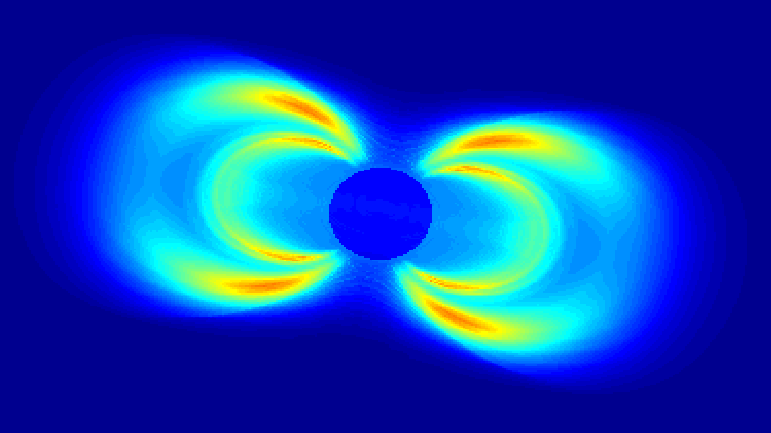Spacecraft near Earth are continuously impacted by energetic particles. These charged particles, mainly electrons and protons, are trapped in Earth’s magnetic field forming the radiation belts, which have a very dynamic structure. As of now, the only direct observation of the radiation belts are in-situ measurements by particle detectors on-board satellites, which are critical to estimate the radiation intensity, but present a very sparse sampling of the belts. As a complementary observation, synchrotron radiation imaging could provide a global, continuous observation of the electron belts, potentially allowing a major improvement in space weather capabilities for the estimation of radiation levels near Earth, in particular for Navigation and Telecommunication missions flying in an environment susceptible to rapid variations in the electron belts. High-energy electrons in the radiation belts emit an electromagnetic radiation called synchrotron radiation that can be observed by radio interferometry. Unfortunately, its frequencies are largely absorbed by the ionosphere, preventing direct observation from the Earth surface. In the past few years, it has been suggested to observe this radiation far from the Earth, for instance using a telescope at the surface of the Moon. A recent study has shown that it is indeed possible to image the synchrotron radiation of Earth’s radiation belts from the Moon. However, it is still unclear to what extent such measurement would reduce our uncertainties on the radiation belts state. One key challenge to tackle is to solve the inverse problem, which is to compute the electron densities from the observed synchrotron radiation. Our proposal is to investigate numerically this inverse observation problem. We will develop an inversion method taking into account the physics of the radiation belts. We will also study the impact of the different noise sources and quantify the required instrument performances to achieve appropriate observation.

